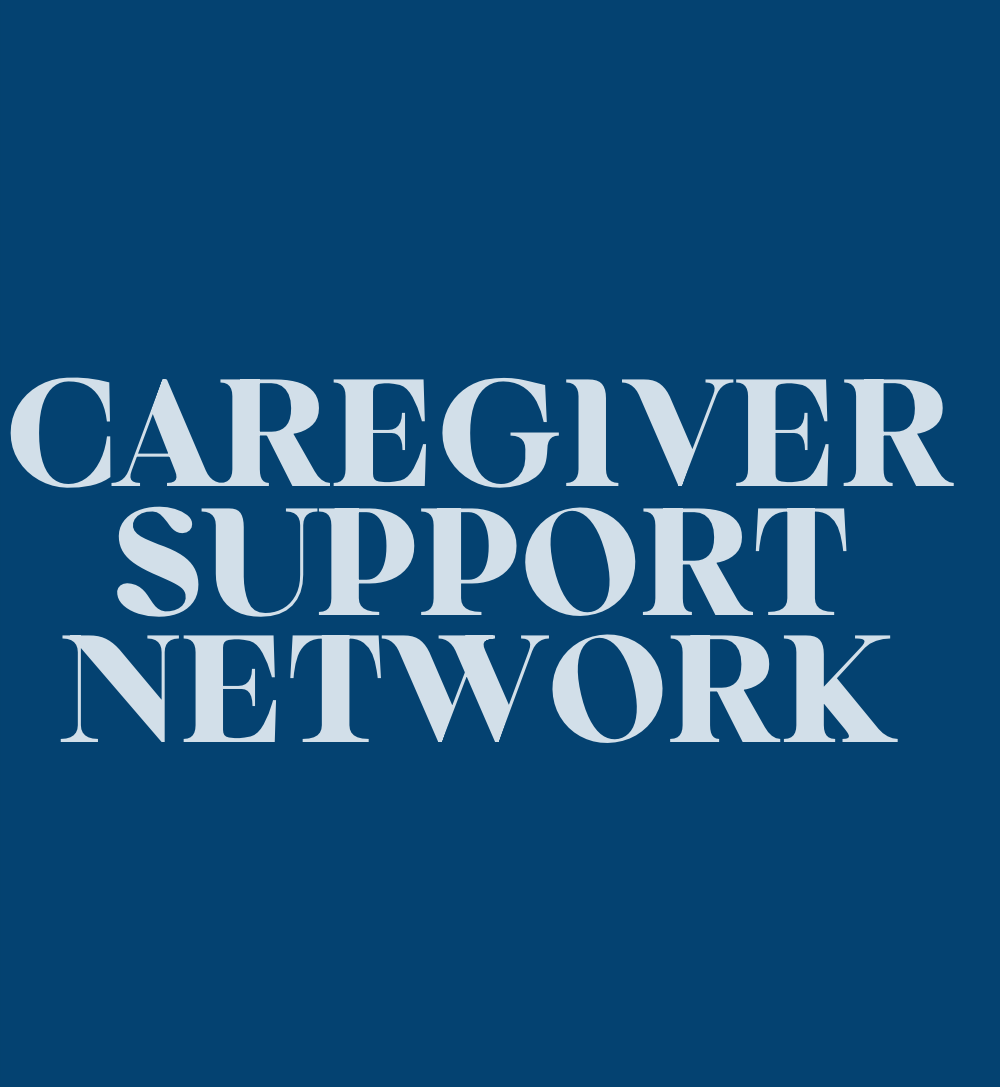Caregiver Support
How to Prevent Falls: A Complete Guide
Start your journey to prevent falls by securing your home and improving balance with essential tips in this comprehensive guide.
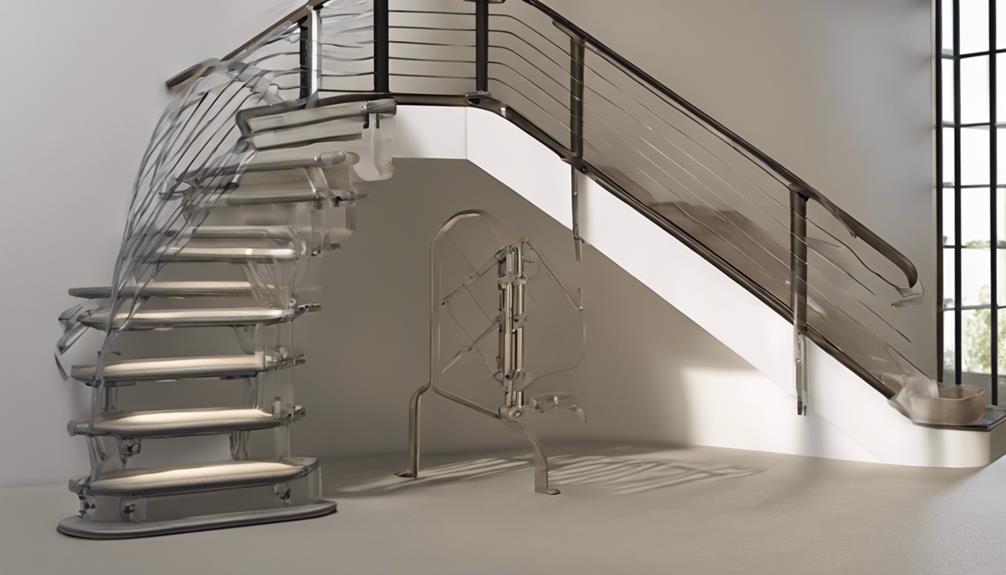
To prevent falls effectively, focus on improving home safety. Start by securing loose rugs, optimizing lighting, and decluttering walkways to minimize hazards. Regularly assess your risk factors, including health conditions and medications that might affect balance. Engage in balance exercises to enhance stability. Consider installing assistive devices like grab bars and handrails. Additionally, ensure proper footwear with good traction and support. These measures, along with maintaining a healthy lifestyle, play vital roles in preventing falls. Mastering fall prevention methods is key for overall well-being and safety. More insights await on enhancing your fall prevention efforts.
Key Takeaways
- Conduct falls prevention risk assessments to identify hazards and individual risk factors.
- Enhance home safety by installing handrails, grab bars, and improving lighting.
- Improve balance through regular exercise and physical activity.
- Wear appropriate footwear with good traction and support.
- Educate on falls prevention, maintain a healthy diet, and implement safety measures.
Risk Factors for Falls
When evaluating the risk factors for falls, we must take into account a variety of environmental, biological, and medical factors that can greatly enhance the likelihood of a fall occurrence. Environmental hazards such as loose rugs, poor lighting, and cluttered walkways pose significant risks for falls. To prevent falls, it's important to address these hazards by ensuring clear pathways, adequate lighting, and secure carpets in the living environment.
Additionally, health conditions like Parkinson's disease, COPD, and certain medications can compromise balance and increase the risk of falling. Regular balance exercises can help improve stability and reduce the likelihood of falls among individuals with these health conditions. Furthermore, using assistive devices like grab bars in bathrooms and handrails on stairs can provide essential support and aid in fall prevention.
Common Reasons for Falls

After identifying the risk factors for falls, it's important to understand the common reasons that contribute to these incidents. Unintentional falls are the leading cause of injury for seniors, leading to numerous emergency department visits annually.
Among older adults, falls in the home, slips, trips, and medication side effects are prevalent reasons for falls. Biological factors and chronic conditions such as Parkinson's disease and COPD also elevate the risk of falling.
Environmental hazards like loose rugs and poor lighting play a significant role in increasing fall risks. Additionally, certain medications with side effects like drowsiness or dizziness can raise the likelihood of falling.
To prevent falls, it's essential to address these common reasons by ensuring home safety, eliminating environmental hazards, and monitoring medication side effects carefully. By taking proactive measures to mitigate these factors, the risk of falls can be greatly reduced, promoting safety and well-being among seniors.
Falls Prevention Risk Assessment
Regularly conducting falls prevention risk evaluations is vital in identifying individual risk factors and tailoring personalized prevention strategies for seniors and individuals at risk. These evaluations help healthcare professionals evaluate various aspects such as health conditions, environmental hazards, balance and gait, medication use, vision, and home safety. By evaluating these factors, tailored falls prevention interventions can be implemented to reduce the risk of falls.
A thorough falls prevention risk evaluation may include a home safety assessment to address potential hazards in the living environment. Moreover, tracking changes in individual risk factors over time through regular evaluations allows for the adjustment of prevention strategies as needed. Ensuring a thorough assessment of all relevant factors and implementing personalized strategies based on the evaluation results are important steps in effectively preventing falls among seniors and individuals at risk.
Conducting balance and gait assessments alongside evaluating other contributing factors can greatly enhance the effectiveness of falls prevention efforts.
Home Adaptations for Fall Prevention

How can simple home adaptations greatly reduce the risk of falls for seniors and individuals at risk?
Installing handrails, grab bars, and non-slip bath mats in important areas of the home can greatly improve balance and reduce fall risks. Enhancing lighting and eliminating tripping hazards like loose rugs are essential steps in ensuring home safety and preventing falls.
Proper handrails on staircases and non-skid mats in the bathroom play an important role in reducing the chances of accidents. Consulting healthcare professionals for advice on falls prevention products and services can further optimize your efforts in preventing falls at home.
Additionally, documenting falls, assisting individuals into a comfortable position, and keeping them warm are key safety measures that should be integrated into your home adaptations for fall prevention routine. By implementing these practical tips and making necessary adjustments, you can create a safer home environment that minimizes the risk of falls and promotes overall well-being.
Preventive Measures for Falls
Implementing preventive measures for falls is essential in maintaining safety and well-being, requiring a proactive approach to home modifications and lifestyle choices. To prevent falls effectively, it's critical to improve balance through exercise classes and regular physical activity. Additionally, conducting falls prevention risk assessments can help identify potential hazards in the home environment and address them promptly. Wearing appropriate footwear that provides good traction and support is also essential in reducing the risk of falls.
Furthermore, making adjustments to the home environment, such as installing handrails, grab bars, and ensuring proper lighting, can greatly enhance fall prevention efforts. Considering adaptations like ramps and additional lighting, especially in areas prone to slips or trips, can further minimize the risk of falls. Engaging in education and exercise classes, maintaining a healthy diet, and prioritizing safety measures like appropriate footwear are key preventive measures to safeguard against falls and promote overall well-being.
Fall Prevention Equipment Installation
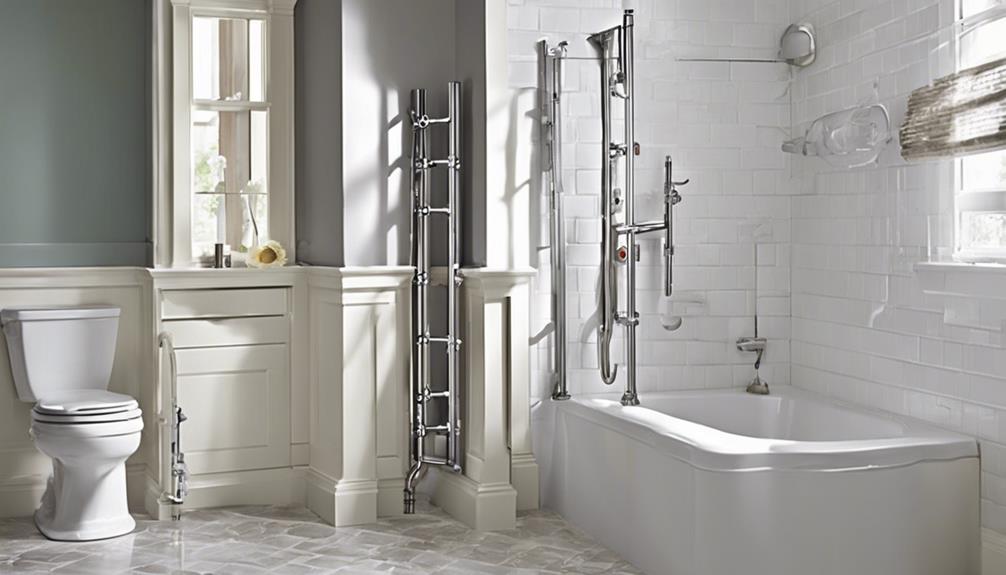
When considering fall prevention, the installation of key equipment such as handrails and grab bars is essential to reducing the risk of accidents. Installing handrails in important areas like staircases and bathrooms provides much-needed support for individuals. Similarly, grab bars near toilets and showers are essential for preventing slips and falls.
Bed rails can offer stability, aiding individuals in safely getting in and out of bed. Non-slip bath mats in the shower and bathroom enhance safety by reducing the likelihood of slipping on wet surfaces. Proper lighting throughout the home, especially in areas like hallways and staircases, is fundamental for fall prevention.
Ensuring that these fall prevention equipment items are correctly installed in key areas can greatly enhance safety and reduce the risk of accidents. By paying attention to these details and incorporating these safety measures, individuals can create a safer environment that minimizes the chances of falls.
Response Protocol for a Fall

In the event of a fall, swift action is vital to guarantee the individual's safety and well-being. Following the F-A-L-L acronym is key for the immediate response protocol after a fall. Here's how to handle the situation effectively:
- F: Find out what happened: Assess the situation to understand the cause of the fall.
- A: Assess the individual: Check for injuries and provide immediate assistance.
- L: Listen to the person: Understand their needs and concerns post-fall.
- L: Look for help: Seek prompt medical help for proper assessment and treatment.
After addressing the immediate concerns, providing recovery support such as personal home assistance or physiotherapy can aid in the healing process. Additionally, it's vital to address both the physical and mental health effects post-fall, including fear of falling and depression, for overall well-being.
Taking preventive measures to reduce the risk of future falls is a proactive approach to fall prevention.
Frequently Asked Questions
What Are the 5 P's of Fall Prevention?
The 5 P's of fall prevention are Proper Planning, Prevention, Preparedness, Proactivity, and Promptness. These principles stress proactive measures to reduce fall risks and create a safe environment.
Proper planning involves identifying potential fall hazards and taking preventive actions. Prevention focuses on strategies to avoid falls before they happen. Preparedness means being ready to respond quickly in case of a fall to minimize injuries.
Proactivity and promptness are key to preventing falls effectively.
What Are 3 Guidelines for Preventing Falls?
When preventing falls, three key guidelines to follow include:
- Adapting the home environment
- Maintaining a healthy diet
- Wearing proper footwear
These measures can greatly reduce the risk of falling and promote better balance. By focusing on these aspects, individuals can create a safer living space and enhance their overall well-being.
What Are the 4 P's of Fall Prevention?
The 4 P's of fall prevention are:
- Personal factors like age, balance issues, and chronic conditions increase fall risk.
- Physical Environment hazards include poor lighting and slippery floors.
- Prescription Medications can cause side effects affecting balance.
- Physician Communication involves discussing fall risks with healthcare providers for tailored prevention strategies.
It's essential to address these areas thoroughly to reduce the risk of falls effectively.
What Is the Guidance on Falls Prevention?
To prevent falls, adapt your home, eat well, and wear proper shoes. Get educated, exercise, and assess your fall risks. Install handrails, grab bars, and good lighting. Consider snow removal, ramps, and extra lighting.
If you fall, follow the F-A-L-L steps and seek medical help. These steps can help prevent falls and keep you safe.
Conclusion
To sum up, addressing fall risks involves:
- Identifying risk factors
- Making essential home adaptations
- Implementing preventive measures
By evaluating potential hazards, installing fall prevention equipment, and establishing a response protocol, individuals can reduce the chances of falls and minimize the risk of injury.
Remember, staying proactive and taking necessary precautions can help maintain safety and independence. Stay vigilant, stay safe.
Albert brings a wealth of knowledge and expertise to our writing team. With a background in caregiving and a deep understanding of the challenges faced by caregivers, Albert’s writing resonates with authenticity and empathy. He is committed to delivering high-quality content that empowers and supports caregivers on their journey.
Caregiver Support
Genetics of Dementia: Is It Hereditary?
Familial early-onset dementia and genetic risk factors make understanding the heritability of dementia essential – delve into how genetics influence dementia progression.

Genetics affect dementia, with specific genes increasing the risk. Familial early-onset dementia can result from rare gene variants. Genetic testing helps identify risk factors. It's vital for understanding the heritability of dementia. Family history plays a significant role. Genetic factors influence the risk of developing dementia. Genetic counseling provides insights into the risk factors. Certain gene mutations can be inherited, especially in certain types of dementia. Knowing genetic inheritance is key for Alzheimer's. Early detection of genetic risks is essential. Learning more about genetic dementia risk will expand your knowledge.
Key Takeaways
- Genetic factors significantly influence the risk of developing dementia.
- Specific gene variants can increase susceptibility to conditions like Alzheimer's.
- Rare gene mutations can cause familial early-onset dementia.
- Understanding genetic inheritance is crucial in dementia, especially in early-onset cases.
- Genetic testing plays a vital role in identifying hereditary factors associated with dementia.
Genetic Basis of Dementia
In some cases, certain gene variants can directly influence an individual's risk of developing dementia. These genetic factors play an important role in determining the susceptibility to conditions like Alzheimer's and other forms of dementia.
While most dementia cases aren't directly inherited, specific genes can increase the likelihood of developing the condition. In rare instances, certain gene variants can even cause familial early-onset dementia, making it more likely for the condition to pass down through generations.
Genetic testing can help identify these risk variants associated with dementia, aiding in understanding the hereditary aspects of the disease. By understanding the genetic basis of dementia, individuals can benefit from early detection, personalized treatment strategies, and family counseling for those at higher risk.
Recognizing the impact of genes on dementia risk and taking proactive steps towards managing potential hereditary factors is crucial for better overall well-being.
Heritability of Dementia

Exploring the heritability of dementia sheds light on the important role genetic factors play in influencing an individual's susceptibility to the condition. Understanding the impact of genetic inheritance on the risk of dementia, especially in conditions like Alzheimer's disease and early-onset dementia, is essential for individuals with a family history of the condition. Genetic testing is a valuable tool in unraveling the hereditary aspects of dementia, providing insights into the genetic factors that contribute to its development.
| Heritability of Dementia | ||
|---|---|---|
| Genetic Testing | Hereditary Risk | Family History |
| Genetic testing is essential in understanding the heritability of dementia, particularly in Alzheimer's disease and early-onset cases. | The risk of dementia can be significantly influenced by hereditary factors, especially in families with a history of autosomal dominant early-onset dementia. | Knowing one's family history of dementia is crucial in evaluating the risk of developing the condition and the potential role of genetic factors. |
Familial Risk Factors
When examining familial risk factors for dementia, it's important to take into account inherited gene mutations and the available genetic counseling options.
These factors can offer valuable insights into one's risk of developing dementia based on their family history.
Understanding these aspects can assist individuals and families in making informed decisions about genetic testing and potential interventions.
Inherited Gene Mutations
Understanding how inherited gene mutations contribute to familial risk factors for specific types of dementia is essential in evaluating and managing potential risks within families. Inherited gene mutations can play a significant role in the development of certain types of dementia, including early-onset Alzheimer's disease and frontotemporal dementia. These genetic links for different types of dementia can be inherited within families, leading to a higher risk of developing the condition. Genetic variants, such as the APOE4 gene, are associated with an increased risk of Alzheimer's disease. Familial Alzheimer's, frontotemporal dementia, and rare types of dementia may have a hereditary component, impacting multiple generations. Understanding these genetic factors can help families assess their risk and potentially delay the onset of Alzheimer's disease.
| Genetic Factor | Associated Dementia Type | Inheritance Pattern |
|---|---|---|
| APOE4 gene | Alzheimer's disease | Autosomal dominant |
| Genetic variants | Frontotemporal dementia | Variable |
| Familial history | Rare types of dementia | Autosomal dominant |
Genetic Counseling Options
Genetic counseling offers families with a history of dementia valuable insights into their familial risk factors. Understanding the genetic component of the disease can help assess the risk of developing Alzheimer's or frontotemporal dementia.
Families with a history of autosomal dominant early-onset dementia face a high 95% lifetime risk of dementia. Genetic counseling programs focus on genetic testing for these specific types of dementia.
Approximately a quarter of individuals aged 55 and above have a family history of dementia, making genetic counseling an essential tool in managing hereditary risks. By providing support and guidance, genetic counseling empowers families to make informed decisions about their health and future.
Autosomal Dominant Inheritance

Autosomal dominant inheritance means that a gene mutation on one copy of a non-sex chromosome can cause the disease, with a 50% chance of passing it on to each offspring. In families where a parent has the condition, there's a 50% risk of inheriting the mutated gene and developing the disease.
This type of inheritance is observed in rare forms of dementia like familial Alzheimer's disease and some cases of frontotemporal dementia.
Genetic Risk Factors
In cases of dementia with autosomal dominant inheritance, individuals have a 50% chance of inheriting the gene from an affected parent. Specific genes like APP, PSEN1, PSEN2, and MAPT can lead to autosomal dominant forms of dementia. This type of inheritance often results in early-onset dementia in those affected.
Rare, inherited forms of dementia frequently exhibit autosomal dominant patterns, emphasizing the importance of genetic testing. Genetic testing plays a vital role in identifying autosomal dominant gene variants associated with familial forms of dementia. Understanding these genetic risk factors can aid in early detection and intervention for individuals at risk of inherited forms of dementia.
Family History Connection
Exploring the familial link to early-onset dementia reveals a significant 95% lifetime risk for individuals with a family history of autosomal dominant inheritance.
In families with a history of autosomal dominant inheritance, genetic testing plays an important role in understanding the genetic basis of Alzheimer's disease and frontotemporal dementia. Genetic counseling is essential for evaluating and managing the risk of dementia in these families.
It's estimated that about 25% of individuals aged 55 and above have a family history of dementia, with a lifetime risk of around 20%.
To better understand and manage the risk of early-onset dementia in families with a strong history of autosomal dominant inheritance, emphasizing genetic testing and counseling is crucial.
Genetic Testing for Dementia
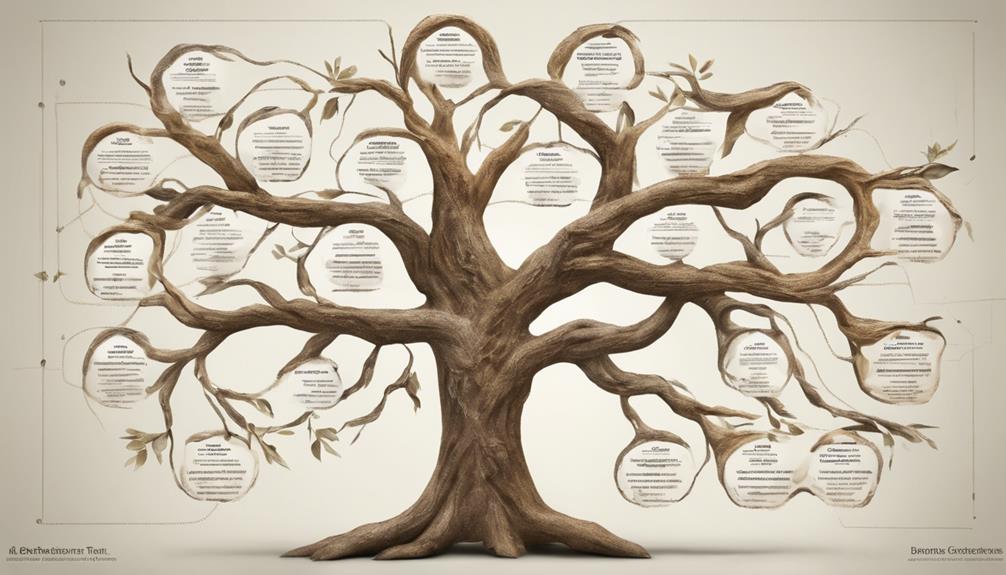
Considering the potential implications and benefits, genetic testing for dementia remains an important tool in identifying specific gene variants associated with increased risk of the disease. Here are four key points about genetic testing for dementia that are significant to understand:
- Identification of Gene Variants: Genetic testing can pinpoint gene variants like the APOE-e4 gene and rare Alzheimer's genes that may elevate the risk of developing dementia.
- Genetic Counseling: Before and after undergoing genetic testing, it's recommended to seek genetic counseling. This guidance helps individuals comprehend the implications of their results thoroughly.
- Treatment Decisions: Results from genetic testing can influence treatment decisions. Understanding one's genetic risk can lead to more personalized and effective approaches to managing dementia.
- Familial Early-Onset Alzheimer's: Rare genes associated with familial early-onset Alzheimer's can be detected through genetic testing. Even though these genes are rare, identifying them can be vital for a small percentage of Alzheimer's cases.
Managing Hereditary Dementia

After understanding the significance of genetic testing for dementia, the focus now shifts towards effectively managing hereditary dementia. Hereditary dementia is rare and often linked to specific genetic mutations that can be passed down through families. Genetic counseling plays an important role in guiding individuals on managing the risks associated with hereditary dementia and understanding inheritance patterns. Rare forms of dementia, such as early-onset Alzheimer's and familial frontotemporal dementia, may have a stronger hereditary component, making it essential to identify specific genetic variants through testing to make informed decisions.
| Inheritance Patterns | Rare Forms | Intervention Strategies |
|---|---|---|
| Specific genetic mutations can be directly inherited within families | Early-onset Alzheimer's and familial frontotemporal dementia | Early detection is key to implementing appropriate care plans |
| Genetic counseling provides insights into managing hereditary dementia risks | Stronger hereditary component in rare forms of dementia | Identifying genetic variants through testing can help in decision-making |
Early detection and intervention strategies are crucial in managing hereditary dementia cases effectively.
Frequently Asked Questions
Is Dementia Is Hereditary?
Dementia can be hereditary in rare cases due to genetic factors. While most instances are not inherited, some types like early-onset Alzheimer's and certain rare dementias have genetic links that increase the risk.
What Is the Number One Trigger for Dementia Behavior?
The number one trigger for dementia behavior is changes in the brain, specifically the accumulation of abnormal proteins like amyloid. Understanding these triggers can assist in managing symptoms and enhancing the quality of life for individuals with dementia.
What Side of the Family Does Dementia Come From?
Dementia can come from both sides of the family. Genetic risk factors for dementia can be inherited from either parent. It's important to take into account overall genetic and environmental factors contributing to its development.
Does the Dementia Gene Skip a Generation?
The dementia gene may not always skip a generation. Understanding genetic factors can reveal inheritance patterns. Genetic counseling can provide clarity on familial dementia risks. Insight into these factors can help us better understand hereditary risks.
Conclusion
To sum up, the genetic puzzle of dementia is like a complex labyrinth, with each inherited trait contributing to the overall picture. Understanding the hereditary aspects of this condition can provide valuable insights for diagnosis and management.
By exploring familial risk factors and genetic testing options, we can navigate this intricate maze with knowledge and foresight.
Remember, knowledge is power when it comes to unraveling the mysteries of dementia and its genetic connections.
Albert brings a wealth of knowledge and expertise to our writing team. With a background in caregiving and a deep understanding of the challenges faced by caregivers, Albert’s writing resonates with authenticity and empathy. He is committed to delivering high-quality content that empowers and supports caregivers on their journey.
Caregiver Support
Practical Guide Upon Death
With practical steps to follow upon death, this guide ensures you navigate essential tasks smoothly during a challenging time.

In the aftermath of a loved one's passing, practical guidance upon death can streamline essential tasks. Notify authorities promptly, register the death, and inform relevant departments like the HMRC and DWP. Manage financial aspects efficiently by seeking support, planning funeral arrangements, and ensuring legal obligations are met. Coordinate funeral preferences, notify contacts, and handle estate matters with care. Efficient communication, detailed preparations, and seeking advice where necessary are key. Understanding these steps is vital for navigating this challenging time smoothly.
Key Takeaways
- Notify relevant authorities promptly for legal obligations.
- Utilize Tell Us Once service for efficient notifications.
- Manage financial matters and seek assistance if needed.
- Ensure all necessary documentation is in order.
- Coordinate funeral arrangements and communicate preferences clearly.
Notifying Authorities and HMRC
When a death occurs, our first step is to promptly notify the relevant authorities and HMRC using the efficient Tell Us Once service. This service streamlines the process by informing various government departments about the deceased, reducing the administrative burden during a challenging time.
The funeral director plays a pivotal role in obtaining the death certificate, an essential document required for official purposes. This certificate validates the death and is necessary for settling legal and financial matters.
Working closely with the funeral director, we make sure that all necessary paperwork is in order to proceed with notifying HMRC and other relevant bodies. By promptly informing HMRC, we initiate the process of handling the deceased's tax affairs and any potential refunds or liabilities. This early notification helps prevent complications and ensures a smoother handling in managing the deceased's financial matters.
Coordinating with the funeral director and obtaining the death certificate are pivotal initial steps in the practical handling of a loved one's passing.
Registering the Death and DWP

When dealing with the aftermath of a loved one's passing, it's important to promptly register the death with the relevant authorities. This process involves providing detailed information to obtain the necessary documentation for funeral arrangements and handling benefits.
Additionally, informing the Department for Work and Pensions is vital for managing financial matters and ensuring the proper support during this challenging time.
Death Certificate Process
Registering a death and handling the DWP benefits involve a structured process that must be completed promptly after a loved one passes away. The funeral home will assist in obtaining the required information for the death certificate, including the date, place of death, full name, address, birth details, occupation, marital status, and details about benefits.
Within five days, the death must be registered with the Registrar of Births, Deaths, and Marriages. Once registered, the Registrar issues a certificate for funeral arrangements and a benefits handling form. Hospital mortuaries hold the body until arrangements by the executor are made, and the doctor provides a medical certificate with the cause of death for registration.
In cases of uncertain causes of death, the coroner conducts an investigation before issuing the death certificate.
Informing Department for Work and Pensions
Informing the Department for Work and Pensions promptly about a loved one's death is essential to update their records and prevent overpayments.
When registering the death with the DWP, provide details such as the deceased's National Insurance number and date of death.
Contact the DWP to halt any benefits or pension payments to the deceased individual. This practical step guarantees a smooth changeover and helps avoid delays in handling the affairs of the deceased.
By notifying the DWP in a timely manner, you can prevent any unnecessary financial complications. Remember, prompt action is key in these situations to facilitate the necessary administrative processes.
Following these steps will assist in managing the deceased's affairs efficiently and responsibly.
Handling Financial Matters
Dealing with financial matters after a death involves promptly notifying relevant government departments and seeking guidance on managing the deceased's finances.
Utilize the Tell Us Once service to notify various entities such as HM Revenue & Customs (HMRC), the Department for Work and Pensions (DWP), the Passport Office, the local council, and the DVLA.
Furthermore, reach out to the Money Advice Service for support in handling the deceased's financial affairs. Explore resources like Age UK, Money Advice Service, and Final Fling for thorough assistance.
Seek advice on funeral costs and consider financial assistance if needed. Be proactive in managing social security checks and handling any outstanding financial obligations.
Managing Finances and Money Advice

When managing finances after a loved one's passing, it's important to handle estate planning basics and budget effectively. Seek advice on pensions, tax, debts, insurance, benefits, and estate management to guarantee financial stability.
Notify relevant government departments to prevent identity fraud and manage the deceased's records efficiently.
Estate Planning Basics
To effectively manage finances and receive valuable money advice in estate planning, it's important to engage in thorough financial organization and seek professional guidance. When considering estate planning basics, it's essential to create wills, trusts, and powers of attorney to safeguard assets and make sure their distribution aligns with your wishes.
Money advice services can provide essential guidance on handling pensions, taxes, debts, insurance, benefits, and estate administration. Executors must notify relevant authorities like HMRC, DWP, Passport Office, local council, and DVLA about the deceased's passing.
Understanding funeral costs, memorials, and seeking financial assistance if needed are crucial aspects of estate planning. By following this practical guide, you can navigate the complexities of estate planning efficiently and ensure a smooth transfer of wealth.
Budgeting After Loss
After establishing wills, trusts, and powers of attorney for effective estate planning, the focus shifts to managing finances and seeking money advice following a loss. Handling finances after the loss of a loved one can be overwhelming, but having a clear plan can help navigate this challenging time. Consider seeking guidance from organizations like the Money Advice Service or Age UK for expert advice on managing finances post-loss. To provide a visual representation of key considerations, refer to the table below:
| Aspect | Action | Resources |
|---|---|---|
| Pensions | Review and update beneficiary details | Money Advice Service |
| Tax | Notify HMRC about changes | Final Fling |
| Debts | Address outstanding debts | Age UK |
| Insurance | Review policies and update beneficiaries | Money Advice Service |
Funeral Preferences and Assistance

In discussing funeral preferences and assistance, we address the vital decisions and support needed during this challenging time. When a loved one dies, there's a need to contemplate various aspects of the funeral arrangements. This includes deciding between burial or cremation, choosing a casket type, and determining the nature of the ceremony that best honors the deceased. Assistance with funeral arrangements is essential and may involve coordinating transportation, participants, flowers, leaflets, headstones, and cemetery plots.
Communication with family and friends is essential during this period. Notifying loved ones, creating contact lists, and informing relevant companies and agencies about the deceased are important tasks. Additionally, providing support through meal preparation, organizing meals for funeral guests, and following traditions like Seudat Havraah after the funeral can help ease the burden on the immediate family. Emphasizing foresight and preparation while moving through rituals and traditions can aid in the grieving process.
Death Abroad Procedures

Dealing with death abroad necessitates adherence to the specific laws of the country where the passing occurred. When someone dies overseas, it's important to navigate the legal processes diligently.
To begin with, make sure you have the necessary documentation, including the deceased's date of birth and any relevant identification papers. Reporting the death to the British Consul may be necessary for potential registration in the UK. Additionally, check if the travel insurance covers the costs of repatriating the deceased's body to the UK.
Once back in the UK, notifying the Registrar of Births, Deaths, and Marriages is vital for arranging burial or cremation. It's also essential to inform relevant authorities if the deceased had expressed wishes for organ donation or body donation to science.
Handling the Aftermath Efficiently

Managing the aftermath of handling a death abroad efficiently involves promptly notifying relevant authorities to manage the deceased's affairs effectively. This step is essential in ensuring a smooth process for settling the deceased's estate and fulfilling any necessary legal obligations. Utilizing services like Tell Us Once can streamline the notification process to various government departments, reducing the administrative burden during a difficult time.
To further assist in handling the aftermath efficiently, consider creating a list of people to inform about the death. This list may include family members, friends, employers, and any other relevant parties. Clear communication with loved ones and others involved can help distribute responsibilities and provide support during the aftermath of a death abroad.
| List of People to Notify | Contact Information |
|---|---|
| Family Members | Phone numbers, emails |
| Friends | Phone numbers, emails |
| Employers | Human Resources department contact |
| Relevant Authorities | Local embassy, consulate contact information |
Frequently Asked Questions
What Paperwork Needs to Be Done After a Death?
After a death, several important paperwork tasks must be completed. These include:
- Obtaining multiple copies of the death certificate
- Reviewing the deceased's will
- Gathering important documents like insurance policies and financial accounts
- Notifying the Social Security Administration
- Contacting institutions such as banks and creditors
Ensuring these steps are taken care of promptly and efficiently is essential for managing the deceased's affairs and addressing legal obligations.
What to Do Immediately After Someone Dies?
Immediately after someone dies, we should contact the hospital or care home for belongings.
The hospital mortuary holds the body until arrangements.
A doctor provides a death certificate for registration.
The Registrar must be informed within 5 days for further documentation.
This process helps in organizing funeral arrangements and managing benefits efficiently.
What Do You Say When Someone Passes Away?
When someone passes away, we offer our condolences and express sympathy. We share favorite memories of the deceased to honor them. We ask how we can support during this difficult time. Avoiding clichés, we provide genuine comfort and support. We let them know we're here to listen.
Supporting those grieving is vital, showing empathy and love. These actions help navigate the challenging journey of loss.
What Happens if Someone Dies Without Family?
When someone dies without family, the state's public administrator steps in. They manage the deceased person's estate, handling assets, debts, and belongings.
If no heirs are found, the state may claim the estate. The public administrator searches for potential beneficiaries. If no one claims the estate, the state may use the assets to pay debts and cover funeral expenses before absorbing any remaining funds.
Conclusion
To sum up, it's important to be prepared for the practical aspects of dealing with death. Did you know that 70% of adults in the UK don't have a will?
By following the steps outlined in this guide, you can make sure that you're ready to handle the necessary tasks and decisions that come with the passing of a loved one.
Remember, being informed and organized can make a difficult time a little bit easier.
Albert brings a wealth of knowledge and expertise to our writing team. With a background in caregiving and a deep understanding of the challenges faced by caregivers, Albert’s writing resonates with authenticity and empathy. He is committed to delivering high-quality content that empowers and supports caregivers on their journey.
Caregiver Support
How to Address the Top 7 Dementia Behaviors
Journey through effective strategies to address the top 7 dementia behaviors, uncovering triggers and communication techniques along the way.

To address the top seven dementia behaviors, we need to understand triggers and use effective communication strategies. Be aware of environmental changes and emotional factors that can influence behaviors. Set a positive mood through body language and clear, simple words. Manage wandering by ensuring safety and a secure environment. Handle incontinence by monitoring fluid intake and seeking healthcare guidance. When faced with agitation or paranoia, stay calm and seek professional help if needed. Manage sleep issues by maintaining a bedtime routine and addressing medical conditions affecting sleep. These strategies are essential in providing proper care for dementia patients.
Key Takeaways
- Identify triggers such as environmental changes and unmet needs.
- Use positive communication strategies to create a supportive environment.
- Implement safety measures to manage wandering behavior effectively.
- Address incontinence challenges through proper fluid management and hygiene practices.
- Employ calming techniques to manage agitation, aggression, and paranoia symptoms.
Understanding Dementia Behavior Triggers
We often encounter various triggers that can influence dementia behaviors, such as environmental changes, emotional factors, and unmet needs. Environmental triggers like loud noises or unfamiliar surroundings can lead to overstimulation and confusion in individuals with dementia. Emotional triggers, such as feeling scared or frustrated, may result in challenging behaviors like agitation or aggression. Unmet needs, like hunger or thirst, can also manifest as problematic behaviors. Caregivers play an important role in identifying and addressing these triggers to help manage challenging behaviors effectively.
Understanding the individual's routine, preferences, and past experiences is essential in recognizing potential triggers. Changes in routine can be particularly triggering for individuals with dementia, leading to feelings of disorientation or anxiety. By creating a calm and familiar environment, minimizing noise, and avoiding overstimulation, caregivers can help reduce the likelihood of challenging behaviors. Anticipating and addressing these triggers proactively can greatly improve the quality of care provided to individuals with dementia.
Communication Strategies for Dementia Care

When providing dementia care, effective communication strategies are essential for fostering understanding and connection with individuals experiencing cognitive decline. To communicate successfully with your loved one, consider the following strategies:
- Set a positive mood through body language and tone to create a welcoming environment for conversations.
- Minimize distractions and use nonverbal cues like gentle touches to attract their attention during interactions.
- State messages clearly using simple words and short sentences to aid comprehension.
- Ask straightforward, answerable questions to avoid confusion and encourage engagement.
- Listen attentively and patiently, both verbally and nonverbally, to show understanding and provide necessary support throughout the conversation.
These strategies can help improve communication with your loved one and enhance your relationship while addressing the challenges of dementia.
Managing Wandering in Dementia Patients
Addressing the issue of wandering in dementia patients requires essential safety measures and a secure environment to prevent potential risks and guarantee their well-being. Six out of 10 individuals with dementia may engage in wandering behavior, which can pose safety risks and present challenges for caregivers.
Wandering episodes can be triggered by changes in location, unmet needs, or sundowning episodes. To manage wandering, caregivers can implement safety measures such as using tracking devices and locking doors to prevent incidents. Involving neighborhood watch groups can also be beneficial in monitoring and ensuring the safety of wandering dementia patients.
Taking an important approach is essential to minimize the potential risks associated with wandering and provide a secure environment for individuals with dementia, promoting their overall well-being and safety. By being vigilant and implementing these strategies, caregivers can create a supportive and secure environment for dementia patients prone to wandering.
Addressing Incontinence Challenges

In managing incontinence challenges related to dementia, it's essential to focus on managing fluid intake and providing proper hygiene. Monitoring the amount of liquids consumed and ensuring regular bathroom visits can help in controlling incontinence issues.
Managing Fluid Intake
Understanding the importance of managing fluid intake is crucial in effectively addressing incontinence challenges commonly faced by individuals with dementia. Here are five key strategies to help manage fluid intake and incontinence:
- Providing regular bathroom reminders
- Creating a consistent toileting schedule
- Using absorbent products like adult diapers or pads
- Monitoring fluid intake and scheduling bathroom breaks
- Seeking guidance from healthcare professionals for specialized care plans.
Providing Proper Hygiene
To effectively manage incontinence challenges in individuals with dementia, establishing proper hygiene practices is essential for maintaining comfort and dignity. Incontinence affects up to 60-70% of those in later stages of dementia, making it essential to create a toileting schedule and provide access to suitable incontinence products.
Caregivers play a crucial role in monitoring hydration levels and offering frequent bathroom breaks to prevent accidents. Seeking professional guidance can provide valuable support in effectively managing incontinence in dementia care. By maintaining good hygiene practices, caregivers can help individuals with dementia feel more comfortable and maintain their dignity.
Coping With Agitation in Dementia

Addressing agitation in dementia requires a thorough understanding of the triggers and effective coping strategies to manage this challenging behavior. Agitation is common in about half of dementia patients in middle to later stages, often leading to verbal threats and physical aggression. Causes of agitation can vary from confusion and pain to frustration and reactions to medications.
To cope with agitation, it's essential to comprehend the patient's needs, create a calm environment, seek professional help if necessary, and employ reassurance and redirection techniques. Triggers such as environmental stressors or unmet needs can exacerbate agitation, making it crucial to address these factors for successful management. Caregivers play an important role in establishing a safe and supportive environment while implementing strategies to reduce agitation and enhance the well-being of individuals with dementia.
- Understand the patient's needs
- Create a calm environment
- Seek professional help if necessary
- Use reassurance and redirection techniques
- Address triggers for effective management
Dealing With Paranoia Symptoms

When dealing with paranoia symptoms in dementia, it's important to approach the individual with patience and understanding, as this common symptom can greatly impact daily interactions and relationships.
Persons with dementia may express unfounded suspicions or beliefs about others, leading to challenges in their daily interactions and relationships with caregivers. Responding calmly and reassuring those experiencing paranoia symptoms is vital to reduce anxiety and distress.
Understanding the underlying causes of paranoia in dementia is essential in tailoring strategies to address and manage this behavior effectively. By being attentive to the individual's concerns and providing a supportive environment, caregivers can help alleviate the distress caused by paranoia symptoms.
It's important to remember that individuals with dementia may perceive situations differently, and their paranoia should be handled with empathy and care. By approaching paranoia symptoms with compassion and a focus on reducing anxiety, caregivers can create a more supportive and understanding environment for individuals with dementia.
Strategies for Sleep Issues in Dementia

Establishing a consistent bedtime routine can greatly aid in regulating sleep patterns and reducing nighttime awakenings in individuals with dementia. When addressing sleep issues in dementia patients, it's important to take into account various factors that can impact their rest. Here are some strategies to improve sleep quality:
- Maintain a regular bedtime: Creating a predictable schedule can help regulate the circadian rhythm.
- Ensure exposure to daylight: Daytime light exposure is vital for maintaining the sleep-wake cycle.
- Address medical conditions: Treating underlying issues like sleep apnea or restless leg syndrome can alleviate sleep disturbances.
- Use non-pharmacological approaches: Creating a calming sleep environment and avoiding stimulants before bedtime can promote better rest.
- Monitor nighttime habits: Keeping track of sleep patterns and adjusting the routine accordingly can help improve overall sleep quality.
Frequently Asked Questions
How Long Do the 7 Stages of Dementia Last?
The 7 stages of dementia vary in duration, lasting from a few years to over a decade, with stages 6 and 7 typically being more extended and challenging. Each stage reflects a different level of cognitive decline and functional impairment.
What Are Three Tips for Helping People With Dementia?
We focus on simple communication, structured routines, and engaging activities to support individuals with dementia. These strategies provide comfort, reduce confusion, and enhance cognitive function. Our approach emphasizes understanding, security, and well-being.
How Do You Deal With Advanced Dementia Patients?
When dealing with advanced dementia patients, we focus on providing comfort, safety, and meeting physical needs. Prevent wandering, secure harmful substances, and guarantee a safe environment. Nurture connections and maintain familiarity. Tailor care strategies based on dementia stages.
What Is the Best Way to Manage Behaviors Associated With Dementia?
Addressing behaviors tied to dementia involves understanding triggers and offering person-centered care. Creating a calming environment, tailoring communication, and seeking professional support are essential. We focus on holistic approaches to enhance the quality of care.
Conclusion
In summary, understanding and addressing the top 7 dementia behaviors is vital for providing effective care for individuals with dementia.
By utilizing communication strategies, managing wandering, addressing incontinence challenges, coping with agitation, dealing with paranoia symptoms, and implementing strategies for sleep issues, caregivers can help improve the quality of life for those with dementia.
It's important to approach each behavior with patience, empathy, and a willingness to adapt to the individual's unique needs and preferences.
Albert brings a wealth of knowledge and expertise to our writing team. With a background in caregiving and a deep understanding of the challenges faced by caregivers, Albert’s writing resonates with authenticity and empathy. He is committed to delivering high-quality content that empowers and supports caregivers on their journey.
-

 Dementia Care2 weeks ago
Dementia Care2 weeks agoHow Gabapentin Affects Dementia: A Comprehensive Guide
-

 Dementia Care2 months ago
Dementia Care2 months agoUnderstanding the Stages of Vascular Dementia: A Visual Chart Guide
-

 Dementia Care2 weeks ago
Dementia Care2 weeks ago5 Things You Need to Know About Jack Nicholson’s Dementia
-

 Medication Management1 month ago
Medication Management1 month agoGabapentin Side Effects: Memory Loss Concerns?
-

 Dementia Care2 months ago
Dementia Care2 months agoUnderstanding Narcissism and Dementia: A How-To Guide
-

 Palliative Care for Parkinson's2 weeks ago
Palliative Care for Parkinson's2 weeks agoPalliative Care for Parkinson’s: A New Hope for Patients”
-
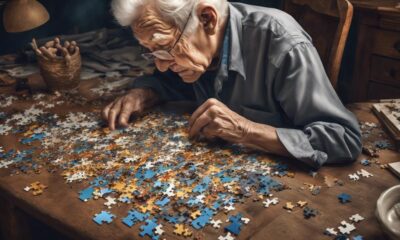
 Dementia Care2 weeks ago
Dementia Care2 weeks ago10 Engaging Dementia Games for Cognitive Stimulation
-
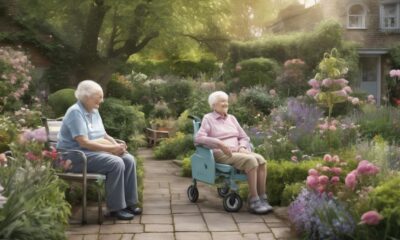
 Dementia Care2 months ago
Dementia Care2 months agoHow to Deal with a Parent’s Dementia: A Practical Guide
